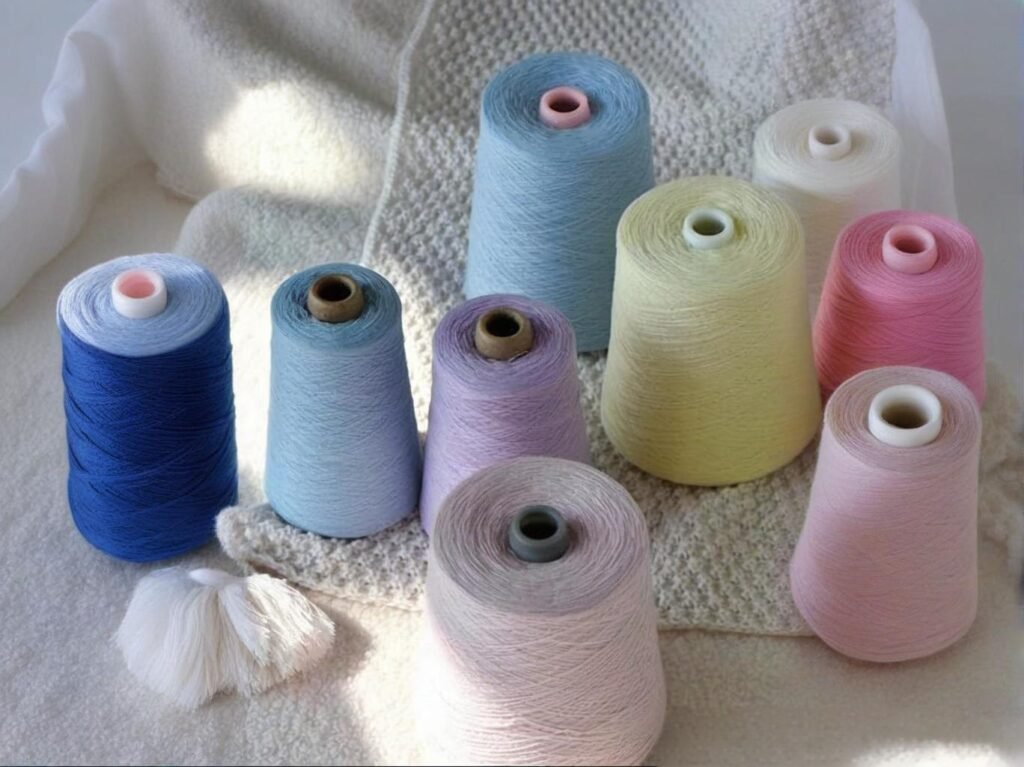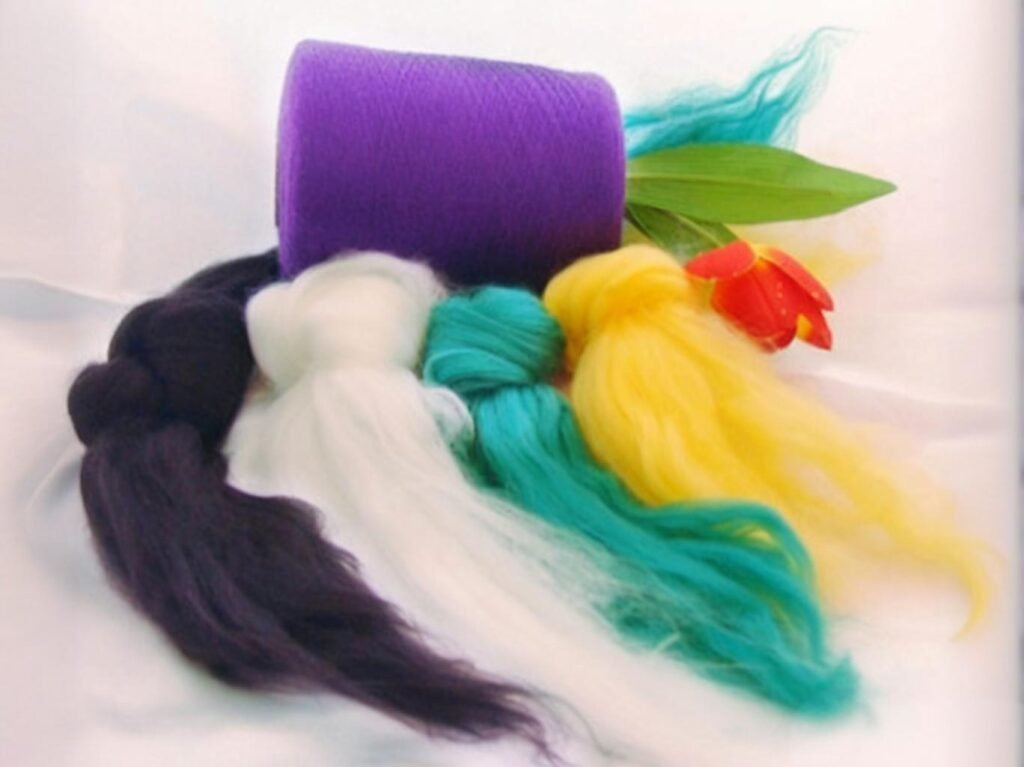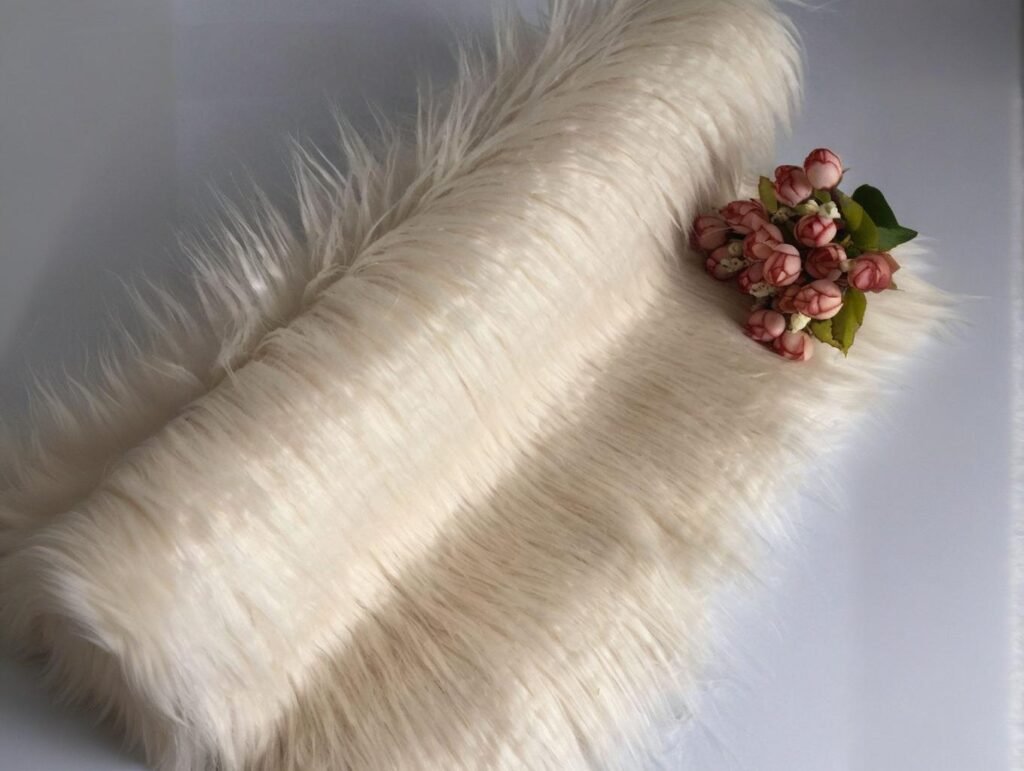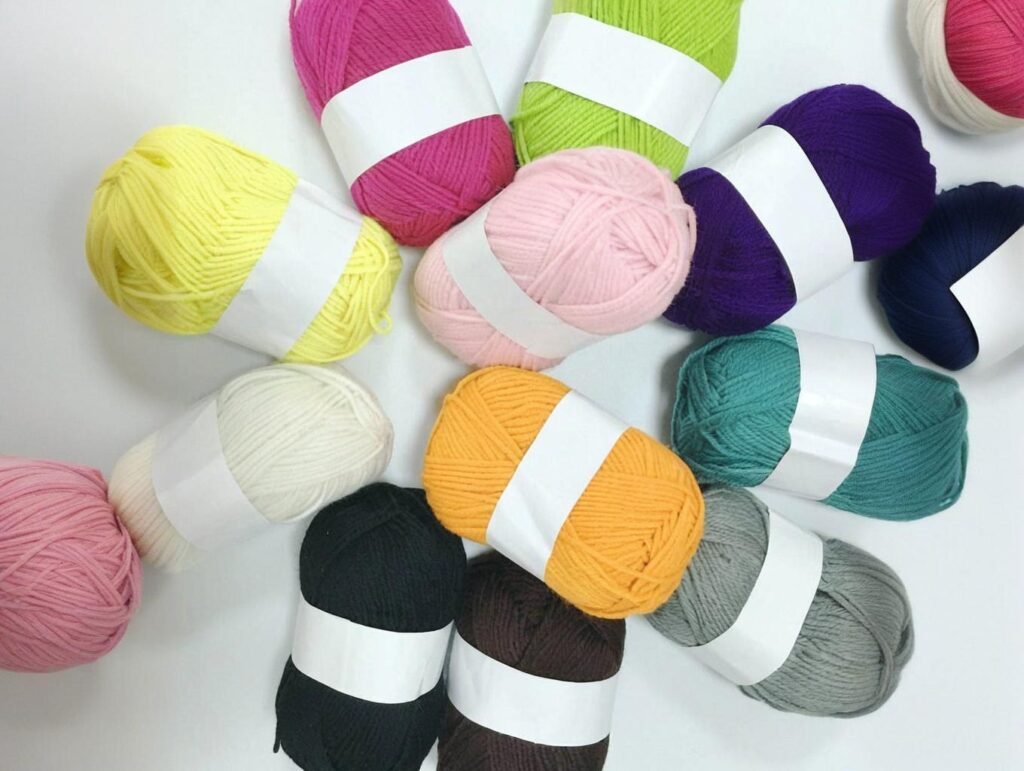In the world of industrial laundering—whether for workwear, uniforms, or production textiles—acrylic paint stains are among the most stubborn and operationally disruptive contaminants. These stains aren’t just surface-level nuisances; they bind tightly to textile fibers, often resisting standard detergent and water-based processes. Especially in facilities servicing construction crews, art schools, signage companies, or textile workshops, paint residue can damage valuable fabrics or ruin batch consistency during mass cleaning.
To remove acrylic paint from fabric in industrial laundry settings, facilities typically rely on a combination of solvent-based pre-treatment, mechanical agitation, and heat-controlled washing—adapted to specific fabric types and stain ages.
For instance, a garment rental service in Europe servicing art schools found their cotton-poly uniforms had a 12% stain rejection rate from dried acrylic paint. After integrating solvent-based pre-treatments and post-wash polymer dispersants, their stain removal success rate increased to 85%, saving over €20,000 in fabric losses per year.
In this article, we’ll dive deep into the fiber-level chemistry of acrylic stains, industrial-grade removal strategies, and how textile buyers can proactively source paint-resistant fabrics for long-term operational efficiency.
What Makes Acrylic Paint Difficult to Remove from Fabric?

Acrylic paint becomes difficult to remove once it dries because it is formulated as a water-based polymer emulsion that solidifies into a plastic-like film. This film binds tightly to fabric fibers, especially porous or natural ones like cotton, creating a semi-permanent stain that resists standard alkaline detergents.
Why Acrylic Paint Sticks—and Stays
The Chemistry of Acrylic Paint
- Acrylic paints use acrylate polymers (often poly(methyl methacrylate)) suspended in water.
- When wet, they are water-soluble. But once dried, the water evaporates and leaves behind a tough, flexible film.
- This film behaves like plastic, embedding itself within the fabric weave.
| Paint Stage | Solubility Level | Removal Difficulty |
|---|---|---|
| Wet | High | Low |
| Semi-dried | Medium | Moderate |
| Fully dried | Low | High |
| Heat-cured | Very Low | Very High |
Mechanical Bonding
- On textured fibers like cotton, linen, or wool, the acrylic paint seeps into the capillaries between fibers and hardens.
- This creates a mechanical lock, similar to adhesive glue.
Heat Accelerates Cure
- Many laundries operate at 50–90°C. If paint is still present during the wash cycle, heat may actually set the stain further, reducing the effectiveness of post-wash removal.
Real-World Note: A textile recycling plant in Canada noted that garments with acrylic paint exposure had a 42% higher rejection rate due to complete fiber penetration after tumble-drying.
Which Types of Fabrics Are Most Affected by Acrylic Paint Stains?
Natural fabrics like cotton, viscose, hemp, and linen are the most vulnerable to acrylic paint stains due to their porous structure and high absorbency. On the other hand, tightly woven synthetics like polyester or nylon offer slightly better resistance but still require specialized treatments if the paint dries.
Fabric-Level Risk and Cleaning Implications
Natural Fibers (High Risk) These materials absorb acrylic paint rapidly and deeply.
| Fabric Type | Absorbency | Paint Penetration Depth | Cleaning Challenge |
|---|---|---|---|
| Cotton | High | Deep | Very High |
| Linen | High | Moderate–Deep | High |
| Bamboo/Rayon | High | Deep | High |
Synthetics (Moderate Risk) Smoother surface and lower absorbency reduce paint adhesion—but removal remains difficult once cured.
| Fabric Type | Surface Smoothness | Paint Adhesion | Cleaning Challenge |
|---|---|---|---|
| Polyester | Smooth | Moderate | Moderate |
| Nylon | Smooth | High (due to polarity) | High |
| Acrylic | Textured | Very High (self-binding) | High |
Blended Fabrics (Variable Risk)
- Cotton-poly blends are commonly used in uniforms and exhibit mixed removal behavior.
- Paint tends to bind deeper into the cotton fibers and sits on the surface of synthetic threads.
Case Example: A garment supplier working with 65/35 poly-cotton blends for a signage installation company saw higher removal rates using targeted solvent sprays only on cotton-dominant zones before wash.
Surface Treatment Impact
- Fabrics with DWR (durable water repellent) coatings or Teflon™ finishes repel wet acrylic paint more effectively.
- However, DWR loses effectiveness after repeated industrial laundering, making regular re-coating necessary.
How Do Industrial Laundries Typically Treat Dried Acrylic Paint?

In industrial laundry operations, removing dried acrylic paint requires a multi-step protocol that starts with pre-treatment, followed by solvent application, mechanical agitation, and then controlled-temperature laundering. Standard detergent cycles alone are ineffective against set acrylic polymers.
Step-by-Step Process for Paint Removal in Large-Scale Laundry
Step 1: Pre-Inspection and Isolation
- Garments or linens with visible dried paint are separated from standard loads to avoid contamination during washing.
- High-volume laundries often use automated inspection systems or manual spot-checking during intake.
Step 2: Chemical Pre-Treatment
- Industrial-grade solvent-based spot removers are applied directly to the stained areas.
- Soaking duration ranges from 10 to 30 minutes, depending on paint thickness and fiber type.
Step 3: Mechanical Action
- For durable textiles, facilities use:
- Rotary drum scrubbers
- Brush rollers
- Localized high-pressure steam
- This helps loosen the polymer film before laundering.
Step 4: Controlled Wash Cycle
- Garments are washed using alkaline detergents combined with emulsifiers and dispersants.
- Water temperature is usually kept between 40–60°C. Higher temps risk setting remaining paint deeper into fabric.
Step 5: Post-Wash Inspection
- Any remaining paint is spot-treated again or sent for manual scraping or rewash.
- Severely stained items are logged for repair or disposal.
| Stage | Purpose | Risk if Skipped |
|---|---|---|
| Pre-treatment | Breaks polymer bonds | Stain becomes permanent |
| Agitation | Lifts paint from fibers | Only surface paint removed |
| Warm wash | Softens residual film | Hardened paint re-cures |
| Inspection | Ensures full removal | Redeposited or hidden stains |
Industrial Insight: A French uniform rental company reduced their stain rejection rate by 48% after installing automatic scrubbing units and implementing a two-stage solvent application process on all paint-exposed items.
What Chemical Solvents Are Effective for Removing Acrylic Paint at Scale?
Not all solvents are created equal. In industrial laundry environments, solvent safety, material compatibility, environmental compliance, and cost-efficiency all play key roles in chemical selection. The most effective solutions break down acrylic polymer chains without damaging fabric or violating wastewater regulations.
Top Solvents Used in Commercial Paint Stain Removal
1. D-Limonene-Based Solvents
- Derived from citrus peels, these are effective at softening cured paint films.
- Low VOC and safer than petroleum-based options.
- Ideal for cotton-rich textiles.
| Attribute | Rating |
|---|---|
| Paint Softening | High |
| Odor | Strong citrus scent |
| Fabric Compatibility | Excellent |
| Biodegradable | Yes |
2. Isopropyl Alcohol (IPA)
- Commonly used for spot cleaning and pre-wash treatment.
- Good for removing partially dried paint but less effective on thick cured layers.
| Attribute | Rating |
|---|---|
| Paint Removal Power | Moderate |
| Evaporation Rate | High (quick drying) |
| Fabric Safety | Good |
| Cost | Low |
3. Butyl Glycol (2-Butoxyethanol)
- Strong solvent used in heavy-duty degreasers.
- Excellent for poly-cotton uniforms stained with cured acrylic.
| Attribute | Rating |
|---|---|
| Penetration Power | Very High |
| Health Hazard | Moderate (requires PPE) |
| Industrial Suitability | Very Good |
4. Proprietary Enzymatic Solutions
- Some laundry chemical suppliers offer custom enzyme blends that break ester bonds in acrylic polymers.
- These are eco-friendlier and reduce reliance on harsh solvents.
Use Case Example: A U.S. art supply garment handler replaced petroleum-based cleaners with enzymatic pre-treatment + D-limonene rinses, reducing solvent disposal costs by 35% and passing all effluent discharge inspections.
Safety & Environmental Considerations
- Always use PPE and proper ventilation when applying strong solvents.
- Ensure chemical compatibility with local wastewater treatment regulations.
- Confirm the material safety data sheet (MSDS) and run test batches before scaling up.
How Does Fabric Type Influence the Removal Method for Acrylic Paint?

Fabric composition plays a critical role in determining how aggressive a removal process can be. Natural, blended, and synthetic fabrics each respond differently to solvents, agitation, and heat, meaning industrial laundries must tailor their approach for maximum paint removal with minimal damage.
Fabric-Specific Removal Strategies for Acrylic Paint
Natural Fibers (Cotton, Linen, Hemp)
- High absorbency means acrylic penetrates deep into the fiber matrix.
- Require stronger pre-treatment solvents and longer soaking times.
- Scrubbing and hot rinsing help soften set polymers, but too much agitation risks fraying.
\| Recommended Treatment | D-limonene + low-friction mechanical scrubbing + 50°C wash | \| Risk Points | Shrinkage, fiber weakening if over-treated |
Blended Fabrics (Poly-Cotton, Nylon-Cotton)
- Blends introduce variable absorbency and stain depth.
- Acrylic tends to bond more with the natural portion (cotton), while sitting closer to the surface of synthetics.
- Effective method: dual-stage solvent for cotton zones + emulsifier rinse for synthetic zones.
| Blend Ratio | Common Issue | Best Practice |
|---|---|---|
| 65C/35P | Deep staining | Solvent soak + manual lift + warm rinse |
| 50N/50C | Uneven bonding | Controlled pH soak + zoned brushing |
Synthetics (Polyester, Nylon, Acrylic)
- Tighter surface structures resist absorption, but cured paint can “melt” into fibers during heat exposure.
- Require less soaking but more temperature control.
- Aggressive chemical stripping (e.g., butyl glycol) may be necessary, but must be closely monitored.
| Synthetic Type | Paint Behavior | Treatment Note |
|---|---|---|
| Polyester | Surface-bonded | Use emulsifiers + warm mechanical scrub |
| Nylon | High chemical reactivity | Use alcohol-based solvent, avoid alkalinity |
| Acrylic | Self-binding | Generally not recoverable once cured |
Laundry Case Study: A uniform cleaning facility in the UAE found that nylon-heavy hi-vis vests reacted negatively to alkaline paint removers, resulting in yellowing. Switching to pH-neutral pre-treatments and cold emulsifier rinses reduced fabric discoloration and improved paint removal efficiency by 22%.
Key Takeaway: No single chemical or method works for all fabrics. An effective industrial removal protocol must consider:
- Fiber type and blend ratio
- Stain age and thickness
- Tolerance to solvents, abrasion, and temperature
What Precautions Should Be Taken to Avoid Fabric Damage During Paint Removal?
In an industrial context, overly aggressive stain removal can lead to fiber degradation, discoloration, or reduced tensile strength, especially with repeated treatments. Preventing damage requires careful balancing of chemical power and mechanical force.
Fabric Safety Protocols in Paint Removal Systems
1. Pre-Test on Fabric Swatches
- Always test new solvent solutions or methods on non-visible areas or offcut swatches.
- Observe for:
- Color bleeding
- Fiber pilling
- Tensile reduction after wash
2. Use Controlled Agitation
- For garments made of delicate or looped fabrics (like fleece or knits), avoid high-speed drum agitation or hard-bristle brushing.
- Use soft rolling brushes or compressed air + solvent rinses instead.
3. Set Solvent Contact Time Carefully
- Overexposure to aggressive solvents like butyl glycol or MEK can:
- Melt synthetic fibers
- Strip surface coatings
- Weaken flame-retardant finishes
| Solvent | Max Safe Contact Time | Risk Level (if exceeded) |
|---|---|---|
| D-limonene | 30 minutes | Low (odor only) |
| Isopropyl alcohol | 15 minutes | Medium (color lift) |
| Butyl glycol | 5–10 minutes | High (fiber distortion) |
4. Monitor pH and Temperature
- Paint removers often have a pH of 9–11. Avoid exceeding pH 11 on natural fibers to prevent yellowing or fiber brittleness.
- Keep washing temperatures below 60°C unless absolutely necessary.
5. Avoid High-Heat Drying Post-Treatment
- Residual solvents may react under heat, causing discoloration or odor.
- Allow air-drying or use low-heat tumble cycles under 45°C.
Pro Tip: Use neutralizers post-wash (like citric acid rinse) to restore fabric pH and soften post-treatment texture.
6. Documentation and SOP Development
- Develop fabric-specific standard operating procedures (SOPs) for each uniform or fabric type.
- Include:
- Chemical usage limits
- Soak times
- Agitation levels
- Temperature charts
Industry Benchmark: A hospitality laundry network in Australia implemented SOPs across 6 branches and reduced fabric damage complaints by 39%, while maintaining a >90% stain removal success rate.
Is There a Standardized Process for Acrylic Paint Removal in Commercial Laundry Facilities?

While there’s no single global standard for removing acrylic paint in commercial laundries, best-practice protocols have been established by large-scale operators and chemical suppliers. These processes follow a multi-phase workflow that balances stain effectiveness, fabric preservation, chemical safety, and operational efficiency.
Recommended Multi-Step Workflow for Paint Removal
Phase 1: Identification and Sorting
- Flag stained garments at intake.
- Sort by fabric type and severity of paint coverage.
- Keep away from standard loads to prevent cross-contamination.
Phase 2: Pre-Treatment Application
- Apply targeted solvent (e.g., D-limonene, IPA, or a blend) to affected areas.
- Allow dwell time of 10–30 minutes.
- Use low-friction manual brushing or soft rollers for mechanical action.
Phase 3: Intermediate Rinse
- Rinse in lukewarm water (30–40°C) with emulsifier to loosen remaining pigment.
- Avoid high pressure on delicates.
Phase 4: Machine Wash
- Use controlled wash cycles with:
- pH 9–10 detergent system
- Moderate mechanical action
- 45–60°C water
- Include polymer dispersants to prevent redeposition.
Phase 5: Final Check & Spot Re-Treat
- Inspect garments before drying.
- Reapply solvent + spot scrub on any residual paint.
- Repeat light wash or soak only if fabric integrity allows.
Phase 6: Finishing
- Air dry or use low-temp tumble dry.
- Optionally apply softeners or reproofing agents for high-value fabrics.
| Stage | Goal | Risk if Skipped |
|---|---|---|
| Pre-treatment | Loosen cured paint polymer | Paint sets deeper |
| Agitation | Dislodge film from weave | Only surface residue removed |
| pH-Controlled Wash | Remove solvent and pigment | Solvent residues remain |
| Final Check | Ensure quality control | Customer-facing quality failures |
Efficiency Insight: A leading workwear laundry chain in the Netherlands implemented this 6-step system and reported a 78% reduction in fabric rejection due to acrylic-based stains within 3 months.
How Can B2B Buyers Source Industrial-Grade Fabrics That Resist Acrylic Paint Staining?
Prevention is always better than post-treatment—especially in high-volume environments. Sourcing fabric that resists or releases acrylic paint more easily can drastically reduce costs, minimize processing time, and extend garment life.
Fabric Selection Strategies to Minimize Acrylic Paint Retention
1. Choose Synthetic-Dominant Blends
- Polyester-rich or nylon-rich fabrics offer smoother surfaces, reducing deep paint penetration.
- Coated synthetic fabrics (PU, silicone, acrylic finish) repel liquids better.
2. Look for Performance Finishes
- DWR (Durable Water Repellent) coatings help prevent wet paint from soaking in.
- Anti-static and anti-stain finishes limit pigment bonding during drying.
3. Consider Modacrylic or Solution-Dyed Yarns
- These yarns often have built-in chemical resistance and hydrophobicity.
- They’re especially useful for uniforms, lab coats, or facility textiles exposed to paints and chemicals.
4. Request Fabric Testing Before Purchase
- Ask your supplier for paint-resistance performance tests, such as:
- ISO 105-E04 (stain resistance)
- Contact angle measurement (liquid repellency)
- Wash-fastness with simulated acrylic stain load
| Fabric Type | Acrylic Stain Resistance | Notes |
|---|---|---|
| 100% Cotton | Low | High absorption, harder to clean |
| 65/35 Poly-Cotton | Moderate | Surface staining, easier to pre-treat |
| 100% Polyester (with PU) | High | Best for repelling wet paint |
| Solution-Dyed Modacrylic | Very High | Ideal for FR and chemical use cases |
Case Study: A construction uniform brand partnered with SzoneierFabrics to develop a PU-coated 80/20 polyester-cotton blend with anti-stain finish. Field tests showed 60% faster acrylic paint removal and 3x longer garment lifespan versus untreated cotton canvas.
Sourcing Tips for B2B Buyers:
- Choose suppliers offering custom finishes and yarn engineering
- Ask for free swatches and wash simulations
- Confirm MOQ, sample turnaround, and post-sale support
Industrial Paint Removal Is Science, Strategy, and Sourcing Combined
Acrylic paint stains may be difficult, but they’re not impossible. In commercial laundry operations, success lies in knowing your fibers, using the right chemistry, controlling your process, and choosing fabrics that work with you—not against you.
From art school uniforms to construction gear, removing cured paint requires a balance between solvent effectiveness, fabric safety, workflow efficiency, and long-term material planning.
And if your business is in the textile space, the smart move is prevention through better fabric selection.
Ready to Source Stain-Resistant Fabrics for Industrial Use?
SzoneierFabrics specializes in custom-woven, easy-clean, and solvent-compatible fabrics designed for commercial laundry, industrial uniforms, and high-exposure workwear.
Why SzoneierFabrics?
- ✅ Customized polyester, polycotton, modacrylic blends
- ✅ Paint-resistant coatings and anti-stain treatments
- ✅ Free samples + fast prototyping
- ✅ Low MOQ, fast lead time, 100% quality assurance
- ✅ ISO-certified, REACH-compliant, B2B ready

